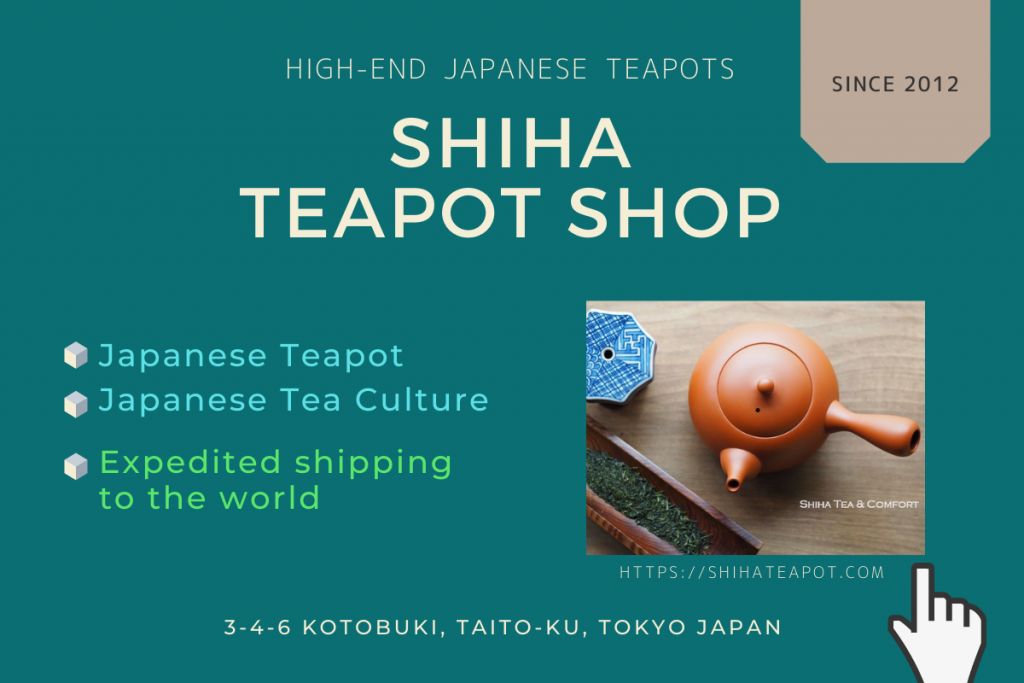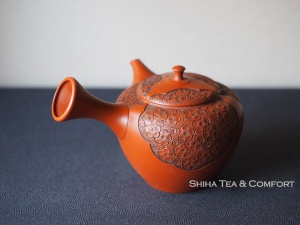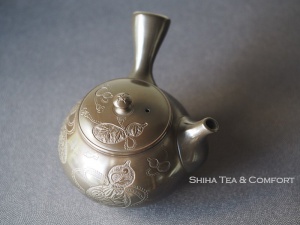8 Secrets of Japanese Ceramic Kyusu Teapot Box (Wood Box / Tomobako)
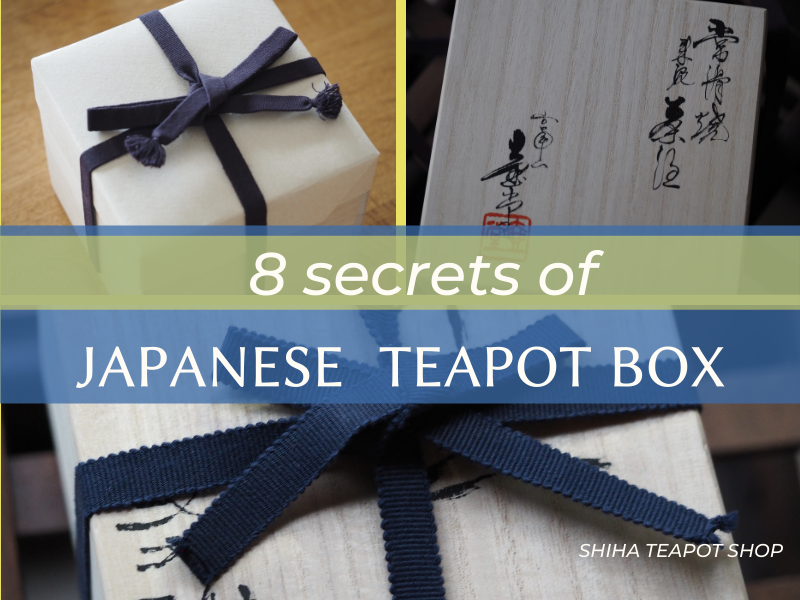
Contents 目次
1 Teapot box is a Certification
Wooden box for teapots (ceramic art works in general) usually has artist’s signature. Box with signature is called Tomobako (共箱) in Japanese.
It is treated like a certificate of pottery works in Japan.
Artist signs his/her name on lid of box with writing brush (fude 筆) and Calligrapy ink (Sumi 墨) .
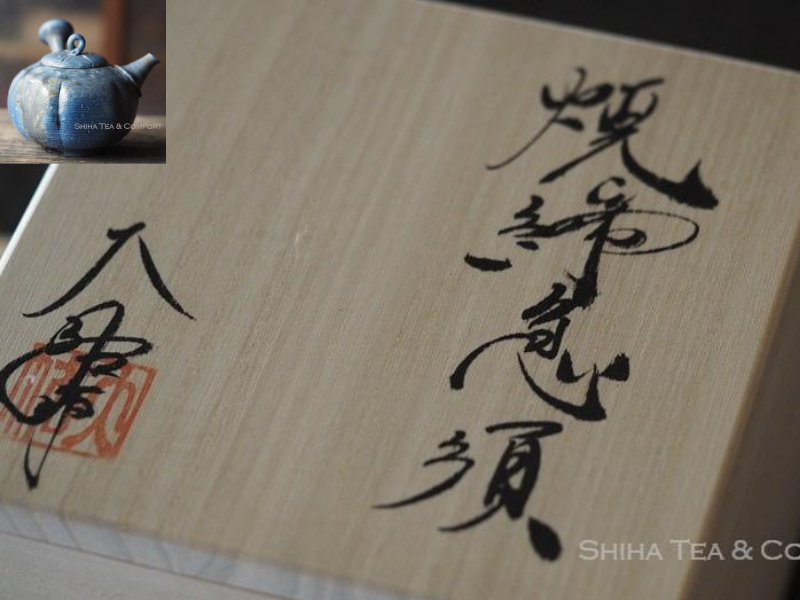
It is sometimes sighed by others for some reason. It is good to ask who wrote it if you can.
2 Material of Teapot Box
Most of teapot (pottery art) box are made of paulownia wood (桐). It is well known material as protecting things from moisture, bug and fire.
Japan’s climate is very humid in summer. Humidity control is very important to keep quality of anything.
For example paulownia wood box are also used for rice storage. Paulownia wardrobe is used for Kimono cloth since old time.
Please also care about the box. Store it dark place to avoid sunshine and light.
3 What is Written on Teapot Box?
Usually it is as flows.
Right side: Item description (name of item / title of item)
Left side: Artist name and seal (signature)
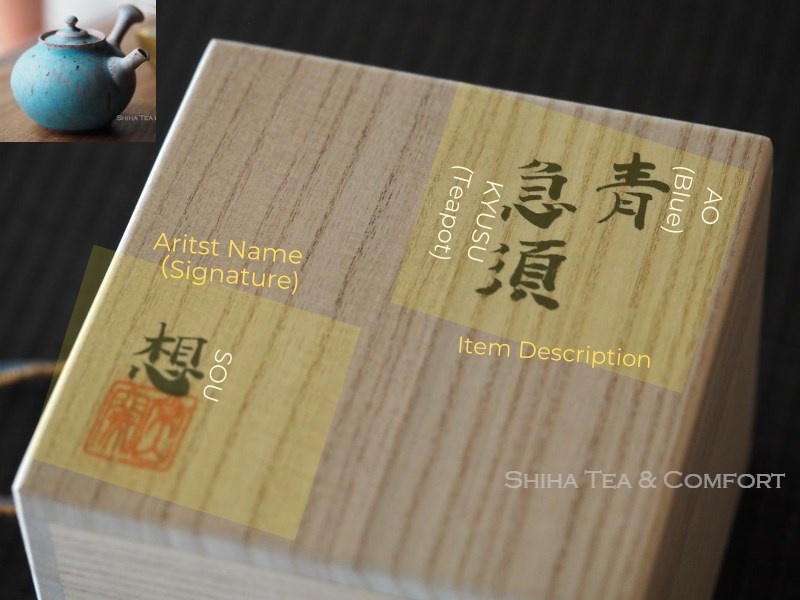
Above photo is a box of YAMADA SOU Teapot.
Title of the teapot is “AO” , which means “blue” in Japanese. Blue teapots are his signature teapots.
“KYUSU” (急須) means “Teapot” . There are many way of naming for Teapot in Japanese. KYUSU is most basic one.
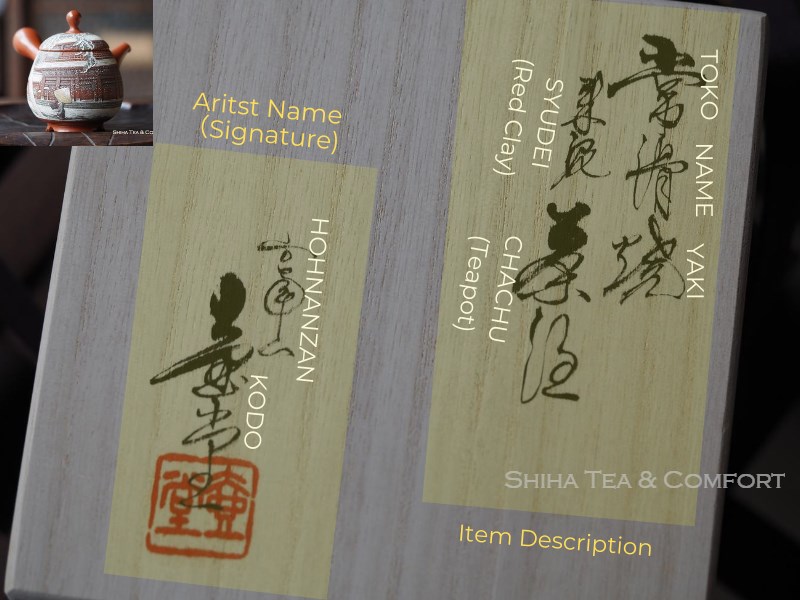
Above box is for YOSHIKAWA KODO ‘s Teapot.
<Right side>
1st line : TOKONAMEYAKI (常滑焼) means Tokoname Ware
2nd line: SYUDEI(朱泥)means red clay
2nd line: CHACHU(茶注*)it literally means pour tea utensil. It actually another expression of teapot, which is often written on box by Tokoname artists.
<Left side>
1st line : HOHNANZAN(方南山)…Kodo’s Gago (like a pseudonym)
2nd line: KODO(壺堂)…Artist name and seal
4 Calligraphy on Box is an Art and Valuable
Brush writing (calligraphy) is tasteful art. And it might tell you the personality of the person who wrote it.
According to a Japanese master of calligrapher, you can tell so much about what kind person he/she is by seeing his/her writing.
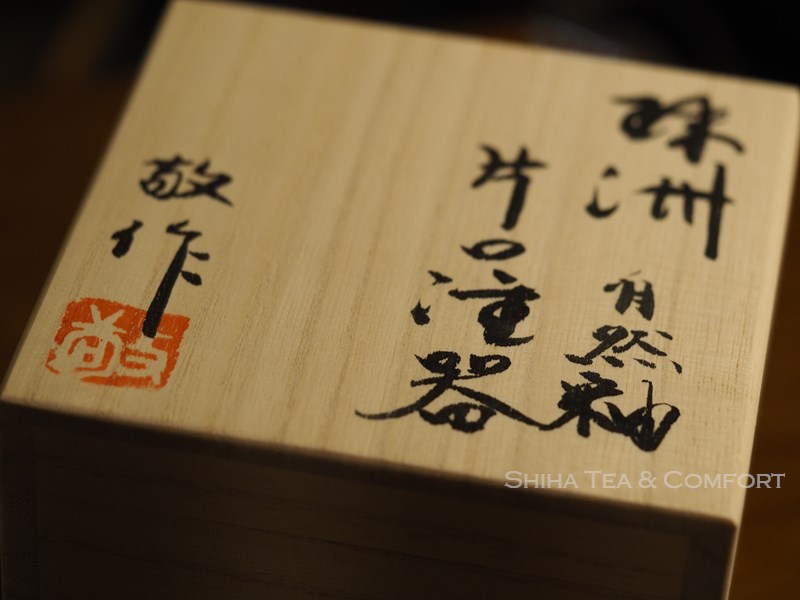
To appreciate brush writing (calligraphy), it is not necessary to understand what is written (meaning of letters/texts).
Feel the strength, power, lightness, smoothness, rhythm of letters and how he/she put them, how his/her hand moved (also think why he/she did that way).
Some lines have both thick and thin in one. Some lines of letters are connected to the next letter. See the balance of each letter, and whole texts.. What is the impression?
See the video of calligraphy (Refer strength, lightness, smoothness of writing )
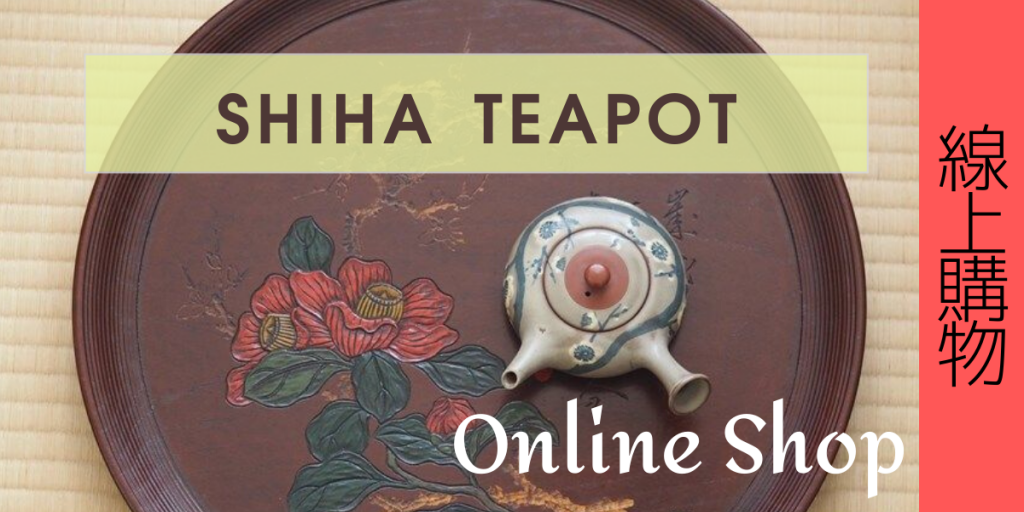
5 Grade of Teapot and Teapot Box
High grade Japanese teapots are often come with wooden box with string. (Sometimes wood box don’t have strings.)
However even high quality teapot sometimes are put in paper box for some reason. Conversely, daily use teapots such as the ones with metal filter/strainer in it never comes with a wood box.
Sometimes, high quality teapots are put in paper box to keep the total price lower.
Please note that in recent years, the price of raw materials has skyrocketed worldwide, the price of a wooden box has also risen.
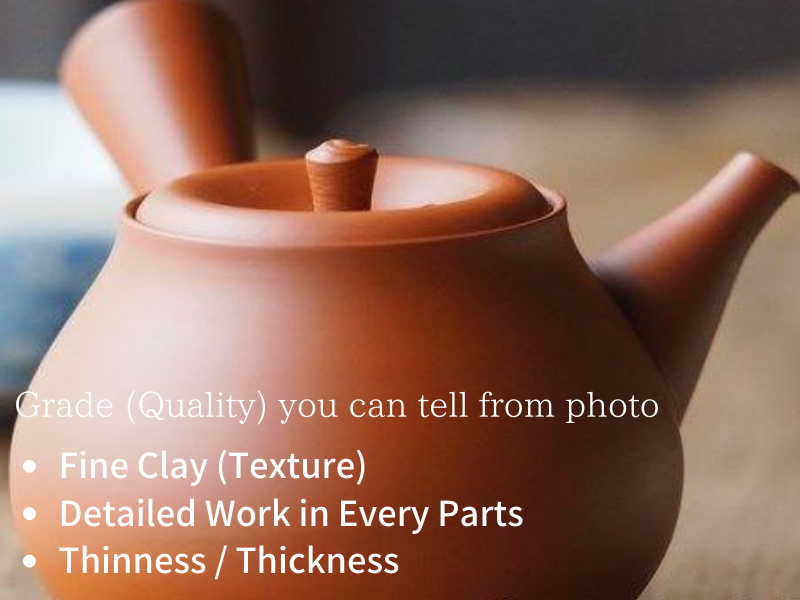
6 Sanada Cord. Name of String/Cord
String on the box is called Sanada himo (sanadahimo 真田紐). “Himo” in Japanese mean String/Cord/Lope. It literally means Sanada Family’s Cord.
Sanada himo has long history (about 400 years) in Japan.
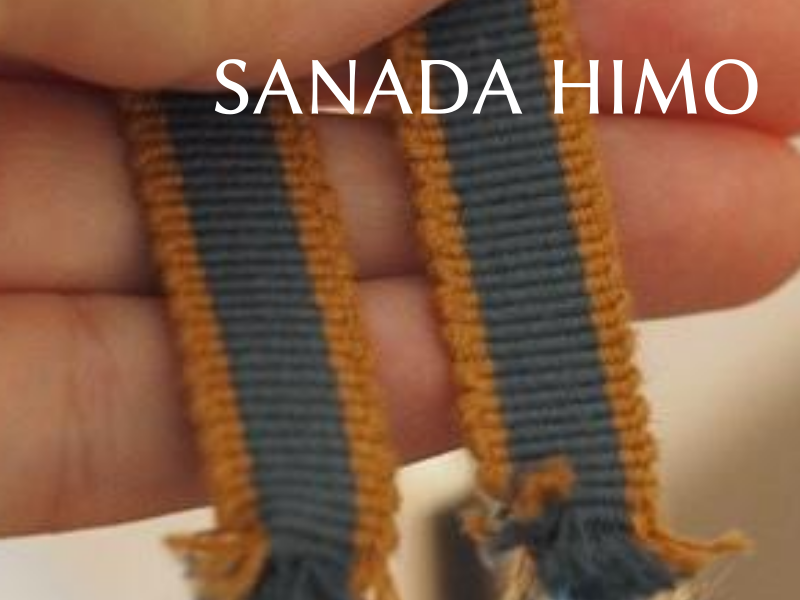
It is beautifully weaved and very strong. There are so many kinds of color, combination of colors and waving style. It is an art.
It is also fun to imagine the reasons why the artist chose the color (style).
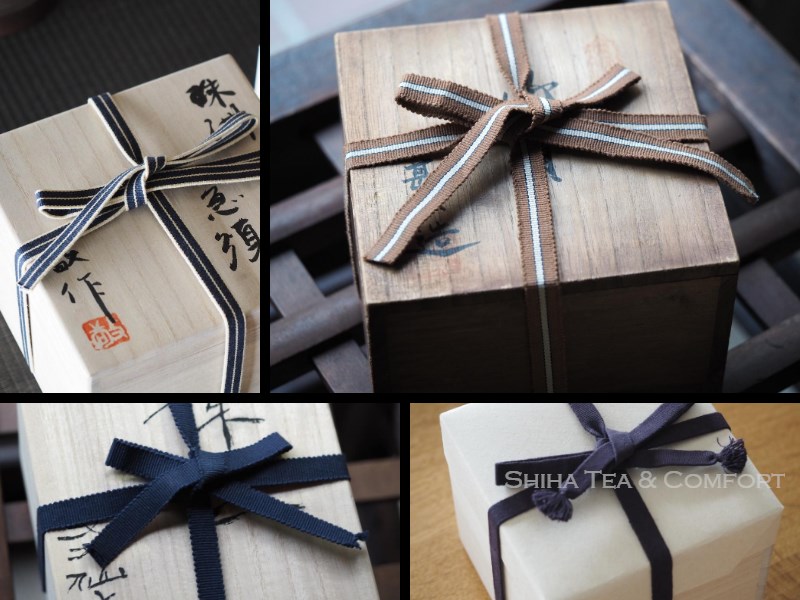
See Sanada Cord Shop near SHIHA TEAPOT SHOP (Our neighbor)
7 Prove Your Knowledge and Love toward Teapot
It is good to know how to tie the string beautifully.
Not many Japanese can tie it well, but pottery lovers can do it smoothly and beautifully.
I can do it well, because it is part of my work. One day at a certain place (in Japan) I did it smoothly. People saw it me doing said “wow! why can you do it? ” It is surprising for some people.
It is definitely cool if you can do it well!
Tie it well proves that how much you know and you love teapots/pottery.
The blog below shows how to tie strings of Japanese Teapot box step by step. Please pay attention to the direction of box (Connection part).
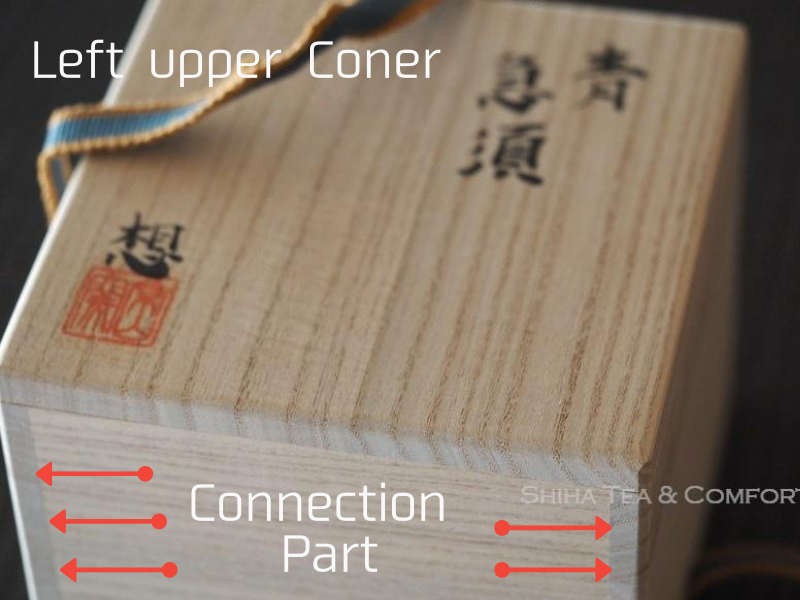
8 Yellow Cloth for Teapot in Wood Box (USE and Meaning)
Yellow cloth is used to wrap teapot when you don’t use the teapot long time and store it in a wood box.
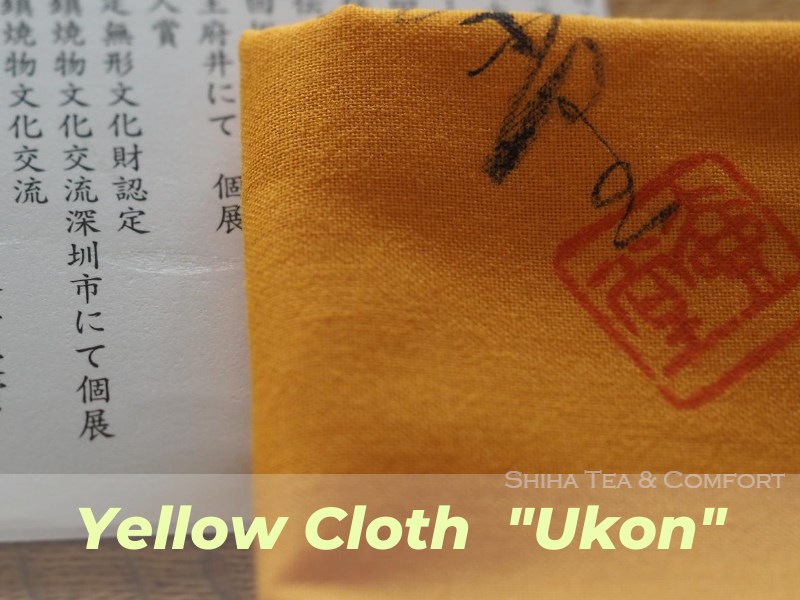
It used to be dyed with turmeric (“Ukon” in Japanase) . Turmeric has effect to prevent mold and bugs.
Therefore, the small cloth for pottery is called “Ukon” in Japan.
Turmeric is no longer used now but we still call the yellow cloth “Ukon” customarily.
Nowadays the cloth colors are diversified. We sometimes see brown, reddish, blue.. It seems that artists are selecting the color goes with their works.
The cloth can be a part of certification with wood box for teapot. Most of the case, artist’s seal is stamped.
If you have a original wood box and yellow cloth, it is perfect.

Thank you very much for reading.
If you would like to buy specific artist’s teapot, we could also arrange it for you.
Please feel free to contact us.
SHIHA TEAPOT SHOP (ONLINE SHOP)
https://shihateapot.com
SHIHA TEA & COMFORT (WEB SITE)
https://shihateacomfort.com
Facebook Messenger
https://m.me/shihateacomfort

